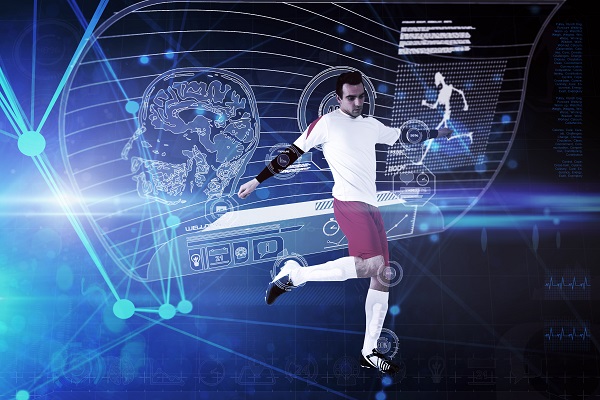
Data analytics has significantly transformed the landscape of sports. The ability to predict match outcomes and player performances accurately has been enhanced through the analysis of vast amounts of data. By uncovering hidden patterns, teams can optimize their strategies in ways that were previously not possible.
As technology continues to progress, the future of sports prediction shows great potential. The influence of data analytics on sports is substantial, not only impacting how teams play but also how fans perceive the game.
Evolution of Sports Data Analytics
The integration of predictive modeling and advanced technologies has significantly transformed sports data analytics, leading to a more precise decision-making process in athletic competitions. Professional sports organizations have embraced predictive analytics as a crucial tool for gaining a competitive edge. By analyzing historical data and employing complex algorithms, teams can now forecast future outcomes with increased accuracy. This evolution in data analytics hasn't only improved the assessment of player performance but has also provided valuable insights for strategic planning and optimization.
The adoption of predictive analytics in professional sports marks a shift towards more informed decision-making. Teams now rely on data-driven strategies to enhance player performance, develop effective game plans, and allocate resources efficiently. The evolution of sports data analytics emphasizes leveraging insights for player development and team optimization. As predictive models continue to enhance their accuracy, sports organizations are better positioned to compete and succeed in the competitive landscape of professional sports.
Impact of Predictive Models
Predictive models in sports analytics utilize historical data to forecast outcomes, assisting teams in making data-informed decisions for player selection and strategic planning. These models analyze player performance trends, team strategies, and game factors to offer valuable insights to sports organizations. Predictive models are used in odds calculation as well betting tips. An example of a platform that use similar models is https://tipsomatic.com/ .
By incorporating predictive analytics, teams aim to enhance decision-making processes related to player selection and game planning. The advanced algorithms in these models calculate win probabilities and performance metrics to provide a comprehensive understanding of the game. The influence of predictive models in sports prediction is evident, leading to refined decision-making processes and more effective strategic planning.
Through the use of these models, teams can optimize player performance, improve coaching strategies, and increase their likelihood of success on the field.
Enhanced Player Performance Insights
In the realm of sports prediction, advanced data analytics algorithms play a crucial role in gaining insights into player performance. These algorithms optimize training regimens, reduce injury risks, and assess player abilities effectively. One such technique, convolutional neural networks (CNNs), allows for detailed analysis of player biometrics and skills to provide accurate evaluations and predictive insights. By leveraging machine learning models, training workloads can be tailored to enhance performance and prevent injuries.
Moreover, data analytics in sports prediction offer comprehensive metrics on the effects of training, potential injury risks, and factors influencing performance. Automated video analytics further aid in real-time assessments of player performance, facilitating informed decision-making for sports strategies. These tools not only improve player management but also significantly enhance predictive capabilities in understanding and enhancing player performance across various sports scenarios.
Team Optimization Strategies
Enhance team performance and cohesion through the strategic application of data analytics. Data analytics can assist in improving player performance, refining team strategies, and optimizing resource allocation. Predictive models can be utilized to determine the most effective lineup combinations for optimal on-field performance. Data-driven insights derived from analytics can aid in informed decision-making related to player selection, substitution patterns, and game tactics. Additionally, analytics can help teams maximize the efficiency of training programs, recovery strategies, and injury prevention measures.
Team optimization strategies based on data analytics are designed to enhance overall team cohesion, chemistry, and performance consistency. By leveraging data analytics, teams can adjust their approaches to improve collective performance and achieve better outcomes. Implementing these strategies can benefit individual players and contribute to the team's overall success by ensuring that each player's strengths are maximized within the team framework.
Future Trends in Sports Prediction
The field of sports prediction is experiencing notable advancements driven by innovative technologies and methodologies that are reshaping forecasting outcomes. Sports analytics, data science, and predictive analytics play a pivotal role in revolutionizing how predictions are made in the sports industry. With a growing demand for more accurate forecasts, the integration of advanced data-driven approaches becomes increasingly essential.
Future trends in sports prediction heavily rely on the continuous progress of machine learning, artificial intelligence, and big data analytics. These technologies are leading a transformation in how predictions are formulated and outcomes are anticipated. Supervised techniques like neural networks, linear regression, decision trees, and naive Bayes are commonly used to forecast sports event outcomes accurately. Additionally, unsupervised techniques such as association rules and k-means clustering are gaining traction in sports prediction modeling, offering new opportunities to enhance predictive capabilities.
Through comprehensive data analysis using data science and AI solutions, the accuracy and reliability of sports predictions are reaching unprecedented levels, paving the way for a future where foresight and analytics intersect to redefine the sports industry.
Conclusion
In conclusion, data analytics in sports prediction has transformed the way teams make decisions, improve player performance, and optimize strategies.
By leveraging predictive models and advanced technologies, sports organizations can gain valuable insights into player performance and enhance their chances of success on the field.
The evolution of sports data analytics has paved the way for future advancements in predicting outcomes and maximizing team efficiency.
Embrace the power of data analytics to stay ahead in the game.
